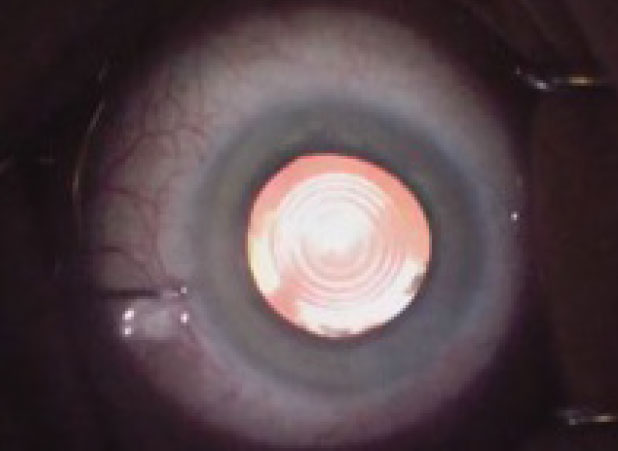 |
|
When ranked with other multifocal IOLs, trifocals came out on top for VA outcomes in presbyopia. Photo: Katherine Rachon, OD. Click image to enlarge. |
Multifocal intraocular lenses (IOLs) have been attempting to replicate the variable focal length capabilities of the human eye for three decades, and each new generation gets a bit closer to that goal than the ones preceding it. Researchers recently conducted a systematic review and meta-analysis to simultaneously compare various types of multifocal IOLs, such as conventional multifocal (bifocal, trifocal, quadrifocal), accommodative and extended depth-of-focus (EDOF) IOLs. The review of 27 studies determined that the greatest improvement in visual acuity (VA) considering uncorrected near VA was achieved with trifocal IOLs and bifocal diffractive IOLs, while both trifocal IOLs and EDOF IOLs ameliorated uncorrected intermediate VA.1
The outcomes of the 2,605 patients examined included binocular VAs by distance and optical quality, including glare, halos and spectacle independence. For binocular uncorrected VA, all types of multifocal IOLs afforded better VA than monofocal IOLs without overlapping 95% credible intervals. Regarding binocular uncorrected intermediate VA, trifocal and EDOF IOLs provided improvements relative to monofocal IOLs without overlapping 95% credible intervals; however, accommodative and newly developed bifocal diffractive IOLs failed to show improvements when compared with monofocal IOLs. When it came to subjective visual quality, the research team observed that far vision, contrast sensitivity and vision quality following bilateral implantation were comparable for presbyopia-correcting multifocal and monofocal IOLs.
They concluded in their paper in JAMA Ophthalmology, “For patients considering a multifocal IOL caused by presbyopia, bilateral implantation of a trifocal IOL would be an optimal option for those who want to be spectacle-free.”1
A commentary accompanying the article in the same journal noted, “A more balanced and nuanced conclusion could be drawn when the ranking statistics are interpreted jointly with (1) the size of treatment effect, (2) safety, (3) certainty in evidence and (4) clinical experience, patient preference and cost considerations.” The authors added, “Even when appropriate ranking statistics values are used, higher-ranking treatments may still have modest or insignificant clinical effects relative to lower-ranking treatments.2
The authors of the commentary suggest practitioners consider the evidence on the comparative effectiveness of various IOLs, health of the eye, presence of any ocular comorbidities, ocular surgical history and visual needs of the patient. Finally, they call attention to patients who face growing cost-sharing pressure when choosing a presbyopia-correcting lens. Since multifocal and trifocal lenses are not covered by insurance in the United States, the out-of-pocket expenses can be significant.
“The treatment rankings must be interpreted cautiously as the treatment at the top of the ranking may not reflect the best clinical choice,” they concluded. “Rankings must be considered together with relative treatment effects, quality of the evidence and patient preference.”2
1. Cho J, Won YK, Park J, et al. Visual outcomes and optical quality of accommodative, multifocal, extended depth-of-focus and monofocal intraocular lenses in presbyopia-correcting cataract surgery: a systematic review and Bayesian network meta-analysis. JAMA Ophthalmol. September 22, 2022. [Epub ahead of print]. 2. Li T, Davidson RS, Virgili G. Choosing intraocular lenses in patients undergoing bilateral cataract extraction—one size does not fit all. JAMA Ophthalmol. September 22, 2022. [Epub ahead of print]. |

